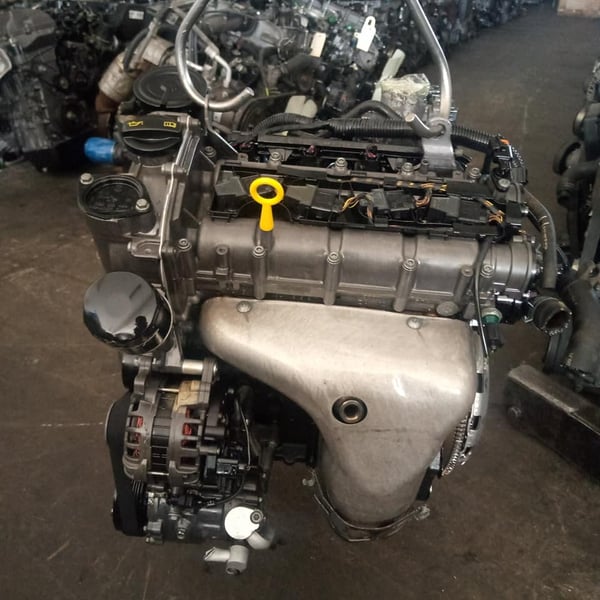Prevent operational issues with a well-tuned clp engine.
Prevent operational issues with a well-tuned clp engine.
Blog Article
How a Clp Engine Can Enhance Efficiency in Different Industries
The introduction of CLP engines marks a considerable shift in functional efficiency across numerous industries, driven by their capacity to enhance gas usage and lessen downtime. Industries such as production and logistics stand to gain considerably from their durable layout and constant power result, which assure to simplify procedures and improve performance. As organizations significantly focus on sustainability along with performance, the role of CLP engines becomes much more essential. What continues to be to be seen is how these developments will certainly form the future landscape of industrial operations and their impact on more comprehensive economic fads (clp engine).
Introduction of CLP Engines
CLP engines, or Continuous Liquid Propellant engines, stand for a significant innovation in propulsion modern technology, particularly for area applications. These engines make use of a continual feed system that permits the sustained expulsion of propellant, leading to enhanced effectiveness and performance compared to traditional strong or hybrid propulsion systems. By preserving a continuous flow of fluid propellant, CLP engines can achieve much more exact thrust control, which is critical for steering spacecraft in different goal situations.
The style of CLP engines integrates sophisticated materials and innovative fuel administration systems. clp engine. This results in lowered weight and enhanced dependability, important aspects for long-duration room missions. The continual operation minimizes the risk of combustion instability, a common challenge in conventional rocket engines.

Benefits in Production
The manufacturing of Continuous Liquid Propellant (CLP) engines offers a number of remarkable advantages that improve both performance and cost-effectiveness. One of the main advantages is the streamlined manufacturing procedure, which reduces the complexity related to conventional propulsion systems. By making use of liquid propellant, makers can accomplish higher accuracy in engine performance, resulting in enhanced power outcome and minimized waste.
In addition, CLP engines facilitate a greater degree of modularity, permitting for less complicated combination into various production lines. This versatility can dramatically decrease preparations and enhance overall functional adaptability. Using CLP technology additionally tends to decrease the demand for comprehensive upkeep as a result of fewer moving parts, which converts into decreased downtime and operational expenses.

Applications in Logistics
Leveraging Constant Liquid Propellant (CLP) engines in logistics supplies considerable benefits in functional effectiveness and dependability. These engines give a durable remedy for numerous transport requirements, making it possible for the seamless motion of items throughout vast ranges. The inherent style of CLP engines permits consistent power result, which translates right into smoother and extra predictable transportation timetables.
One of the vital applications of CLP engines in logistics remains in durable freight transportation, where they can drive both ground and click here for info airborne cars. Their ability to keep high performance under varying load conditions guarantees that distribution timelines are fulfilled, thereby enhancing customer fulfillment. Furthermore, CLP engines can be incorporated into automated logistics systems, promoting real-time tracking and enhancing path preparation.
Furthermore, the resilience of CLP engines lowers upkeep downtime, enabling logistics firms to maximize their functional capacities. This is particularly valuable in warehousing operations, where effectiveness in dealing with and moving items is critical. As logistics continues to progress, the combination of CLP engines represents a forward-thinking strategy that not just enhances efficiency but also sustains the industry's growing needs for dependability and speed.
Effect On Energy Efficiency
How do Constant Fluid Propellant (CLP) engines improve power effectiveness in transportation? CLP engines make use of a constant circulation of liquid gas, enhancing burning processes and keeping a secure thrust result. This design reduces energy losses related to standard burning engines, where gas shipment can vary and lead to inefficiencies.
The continuous procedure of CLP engines permits a much more efficient thermal cycle, causing higher specific impulse contrasted to conventional engines. clp engine. This converts to decreased gas intake for the very same amount of job done, substantially decreasing functional costs throughout different transport industries, consisting of aviation and maritime industries
Moreover, the capacity of CLP engines to preserve optimum performance under varying load problems minimizes the requirement for frequent velocity and slowdown, further boosting fuel effectiveness. Enhanced energy performance not only adds to set you back savings however additionally results in decrease greenhouse gas exhausts, aligning with international sustainability goals.
Future Trends and Innovations
Arising advancements in Continual Fluid Propellant (CLP) engine technology pledge to transform the landscape of transport effectiveness and sustainability. As industries pivot toward greener alternatives, CLP engines stand at the forefront, integrating cutting-edge materials and layout methods that improve performance while lessening ecological influence.
One of one of the most encouraging fads is the adoption of crossbreed systems that combine CLP engines with eco-friendly energy sources. This harmony can maximize fuel next page usage and decrease emissions, aligning with international sustainability goals. Furthermore, innovations in computational liquid characteristics (CFD) are facilitating the design of more aerodynamically reliable engines, bring about lowered drag and boosted fuel effectiveness.
Furthermore, the growth of smart surveillance systems is established to improve functional performances. These systems take advantage of data analytics and IoT technology to enhance engine efficiency in real-time, guaranteeing that the engines operate within their most efficient parameters.
As research continues to explore alternative propellant solutions-- such Find Out More as biofuels and synthetic gas-- the future of CLP engines looks promising. By harnessing these technologies, industries can not just enhance their efficiency yet additionally contribute dramatically to a cleaner, much more lasting future in transport.
Final Thought
In conclusion, CLP engines represent a significant improvement in effectiveness throughout several sectors. The combination of innovative products and fewer moving parts lessens upkeep demands, while alignment with sustainability objectives positions CLP engines as an essential modern technology for the future.
Report this page